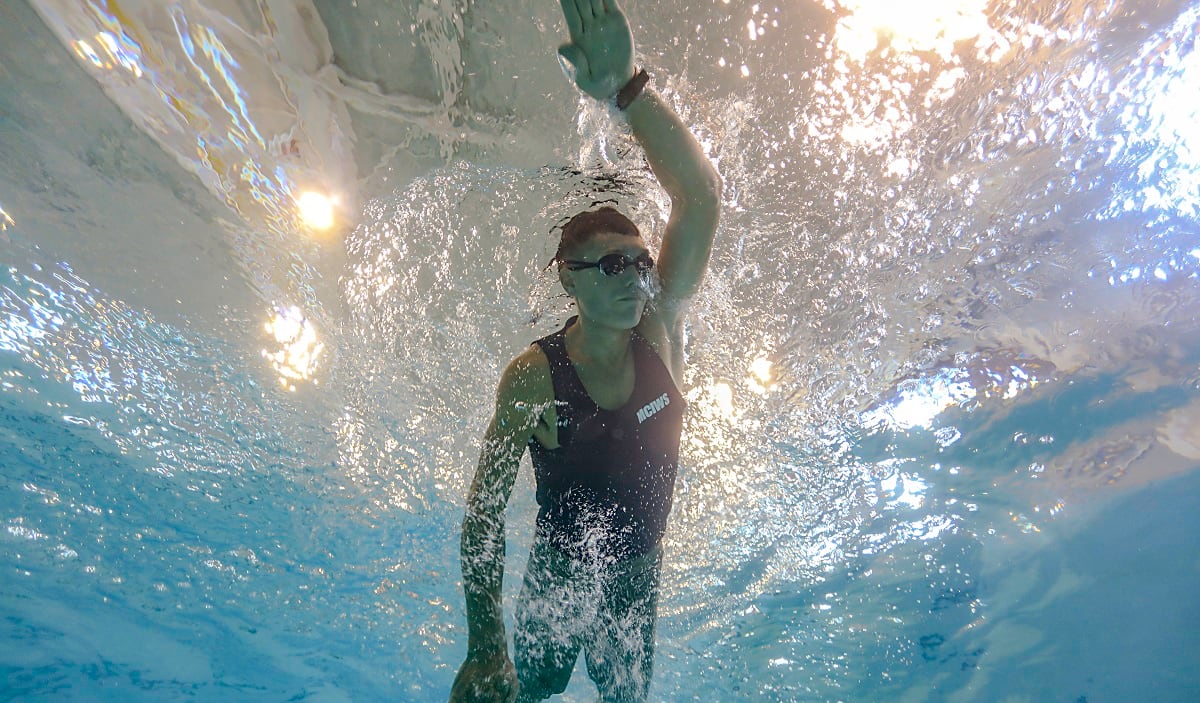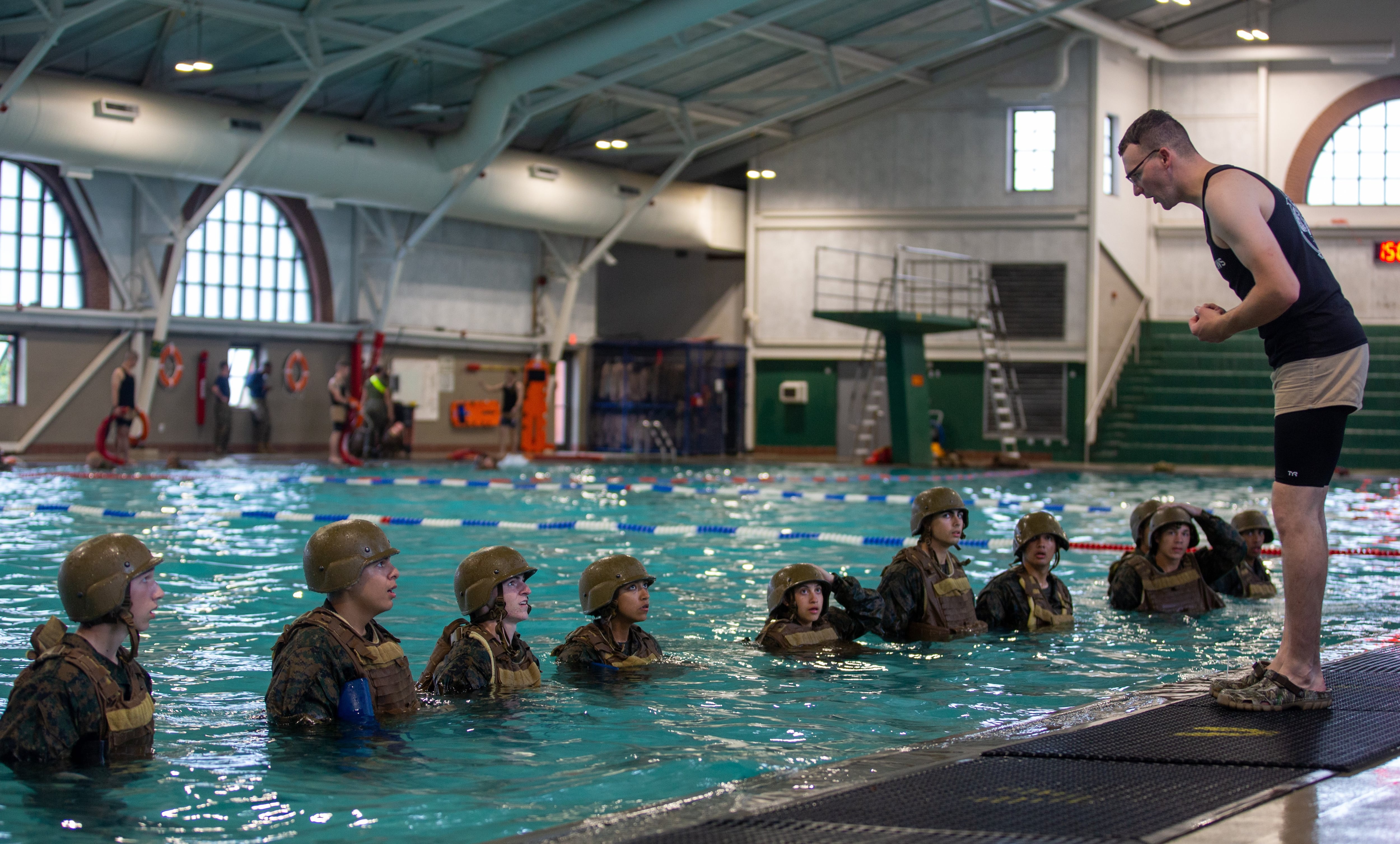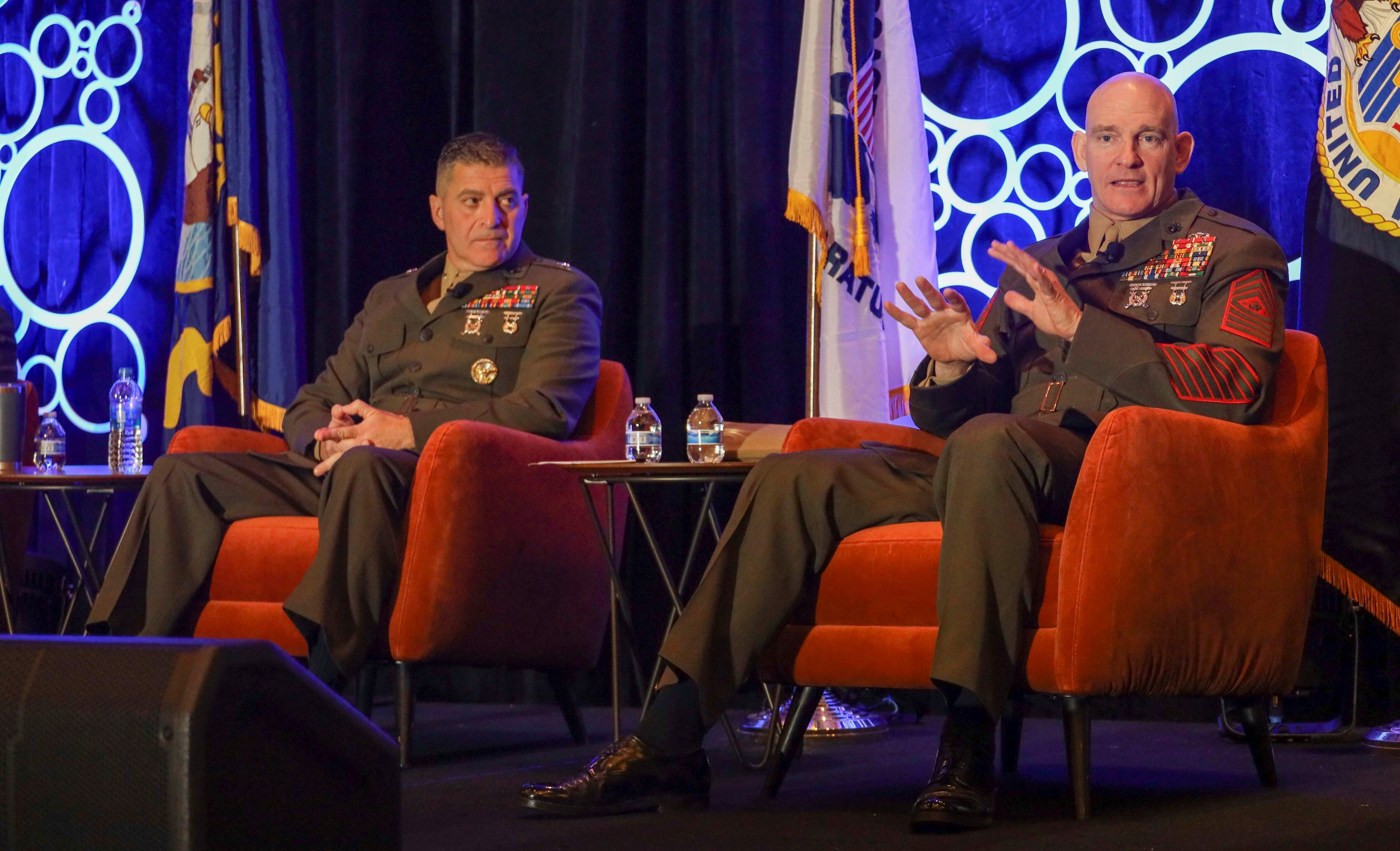Marines are soon going to need to pull out their goggles and brush up on their breaststrokes, according to the Marine Corps’ new blueprint on its training and education overhaul.
“All Marines should expect the standards to be elevated and require additional training in the water,” said the document, which was released on Tuesday.
The Training and Education 2030 planning document lays out a reimagined system for how troops learn by offering a modernized approach to occupational training, professional military education and more.
Included in the report is a direction for updated Marine Corps Water Survival Training policies.
“What we have found through our analysis, is that we need to get Marines more comfortable in the water,” Col. Eric Quehl, Marine Corps Training and Education Command’s director for policy and standards, said during a roundtable event for reporters at the Pentagon.
“So what can Marines expect out of this? We’re definitely going to have some more rigorous training,” he said, adding the changes to standards will likely take place in the next six to eight months.
RELATED

Marines across all military occupational specialties ― from entry-level troops through the fleet Marine force ― can expect their standards to be reevaluated, Quehl said, but troops serving as assault amphibian operators or pilots can expect still higher qualification requirements.
His team even explored the possibility of further training in the open water as a regular, repeatable training exercise, he said.
The publication of this strategic T&E 2030 report marks the third document to come from the commandant’s 2019 planning guidance, following Force Design 2030, released in March 2020, and Talent Management 2030, released in November 2021.
“Modern equipment and manpower models go a long way, but TE2030 enables the critical final steps for creating a smarter, more capable, more lethal force,” Commandant Gen. David Berger said Tuesday in a press release about the new document.
The T&E 2030 report directs an update on water training policies to be published in May and for the deputy commandant for installations and logistics to develop a list of water training facilities required to be built or modified for the expansion of swim training by June.

As the military shifts its focus from operating in the desert environment of the Middle East and Afghanistan to the Indo-Pacific, Marine leaders want to ensure troops are prepared to handle an aquatic environment.
“We actually want to build confidence and capability in the water, so they are ready for the Pacific theater,” Lt. Gen. Kevin Iiams, the commander of Training and Education Command, said during the roundtable.
RELATED

The move for revised water safety standards comes following concern over the swimming abilities of the force.
In 2022, at least two Marines drowned during recreational swimming and another did as well during a training incident, Marine Corps Times previously reported from Naval Safety Center data.
Jonathan is a staff writer and editor of the Early Bird Brief newsletter for Military Times. Follow him on Twitter @lehrfeld_media





